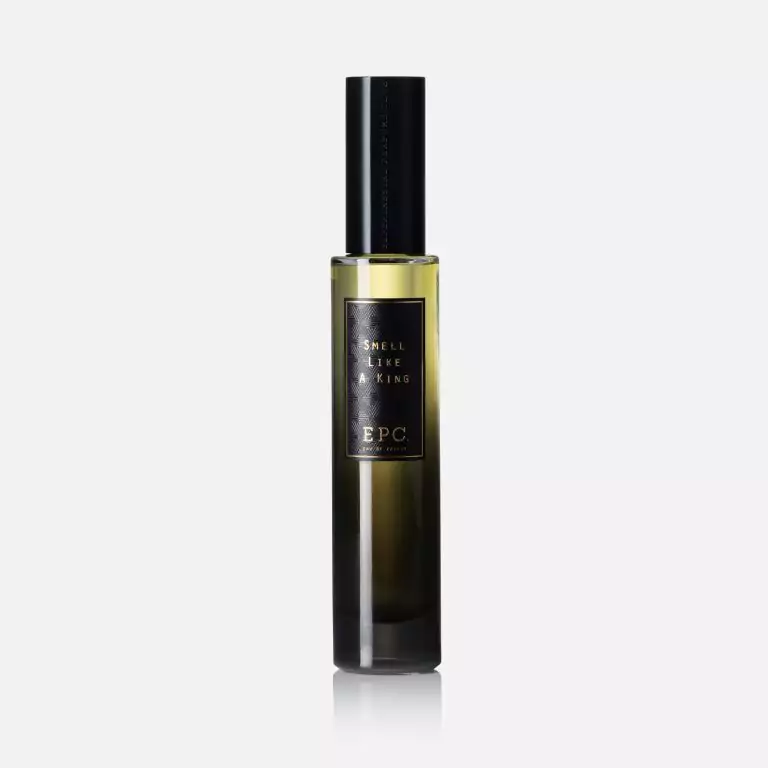Is your skin still feeling dirty even after washing your face? Do stubborn makeup residues and sunscreen leave your complexion looking dull despite your best cleansing efforts? Perhaps you’ve heard about the famous Korean double cleanse method but aren’t sure if it’s worth the extra step in your routine.
The truth is, a single cleanse often isn’t enough to truly clean your skin. The Korean double cleanse method has revolutionized skincare routines worldwide for good reason. This two-step process—using an oil-based cleanser followed by a water-based cleanser—removes everything from makeup and sunscreen to pollution and excess sebum that a single wash simply can’t tackle.
By mastering this K-beauty essential, you’ll unlock clearer, more radiant skin while maximizing the effectiveness of all your other skincare products. In this guide, I’ll walk you through how to double cleanse properly, help you choose the right cleansers for your skin type, and share the techniques that have made this method a non-negotiable step for achieving that coveted Korean glass skin effect.
Korean skincare rituals explained
Double cleansing isn’t just another trend—it’s the foundation of Korean skincare basics that has transformed beauty routines worldwide. This two-step method involves first using an oil-based cleanser followed by a water-based cleanser to thoroughly purify your skin. The oil cleanser works like a magnet, drawing out oil-based impurities such as makeup, sunscreen, and sebum that regular cleansers can’t fully remove. The water-based cleanser then sweeps away any remaining water-soluble impurities like sweat and dirt.
In K-beauty routines, double cleansing isn’t optional—it’s essential. Koreans believe that clean skin is the canvas for everything that follows. Without this crucial first step, your expensive serums and moisturizers won’t perform effectively because they can’t properly penetrate the skin. Think of double cleansing as clearing the path for the rest of your skincare to work its magic. This method supports the Korean philosophy that prevention and maintenance are far more effective than trying to fix skin problems after they appear.
The beauty of the Korean double cleansing method is that it benefits every skin type when done correctly. For oily skin, it helps control excess sebum and prevents clogged pores that lead to breakouts. If you have dry skin, using gentle, hydrating cleansers will remove impurities without stripping your skin’s natural moisture. Those with sensitive skin can adapt the routine with mild, fragrance-free options to avoid irritation. Even combination skin becomes more balanced with consistent double cleansing. The result? Clearer pores, enhanced product absorption, and that coveted “glass skin” glow that Korean beauty is famous for.
Choosing the Right Cleansers for Your Skin Type
Finding the perfect cleansers for your double cleansing routine isn’t just about picking popular products—it’s about understanding what your skin truly needs. Oil-based cleansers are the workhorses of the first step, designed to break down makeup, sunscreen, and excess sebum that water alone can’t touch. The best oil cleansers for double cleansing include those with jojoba oil, which mimics your skin’s natural oils, or sweet almond oil for gentle but effective cleansing. Brands like Rataplan focus on clean beauty principles, incorporating these natural oils into their formulations for superior results without harsh ingredients.
Water-based cleansers complete the double cleanse process by removing any remaining impurities. These come in various textures to suit different skin types—foaming options work well for oily skin, while gel cleansers provide a middle ground for c
Common Mistakes to Avoid in Double Cleansing
Even with the best intentions, many people make common mistakes in double cleansing that can undermine all their skincare efforts. One of the biggest errors is over-cleansing, which strips your skin of its natural protective oils. When you wash your face too frequently or use harsh products, you might notice tightness, redness, or flaking. Ironically, over-cleansing can actually trigger your skin to produce more oil to compensate for the dryness, leading to more breakouts. Rataplan’s gentle cleansing oils are specifically formulated to cleanse effectively without disrupting your skin’s natural balance, making them ideal for preventing this common mistake in double cleansing.
Another frequent error is using the wrong products for your skin type. If you have oily skin but use a heavy oil cleanser, you might clog your pores. On the flip side, if you have dry skin but use a stripping foam cleanser, you could make your dryness worse. The key is finding cleansers that match your specific needs. Menomoso’s Pure Artemisia pH-Balance Cleanser works wonderfully for sensitive and dry skin types, while those with oily skin might prefer Rataplan’s lighter oil formulations that cleanse without leaving residue. Remember that your skin’s needs can change with seasons, hormones, or age, so regularly reassess which products are working best for you.
Perhaps the most overlooked mistake is rushing through the double cleansing process or skipping steps altogether. When you’re tired after a long day, it’s tempting to do a quick wash or skip the oil cleanse. But this often means makeup, sunscreen, and pollution remain on your skin overnight, leading to clogged pores and dullness. Each step serves a purpose: the oil cleanser dissolves oil-based impurities, while the water-based cleanser removes water-soluble dirt. Spending at least 60 seconds massaging each cleanser gives it time to work properly. Think of it as a small investment of time that pays big dividends for your skin’s health and appearance.
Incorporating Deep Cleansing into Your Skincare Routine
Knowing when to double cleanse is the first step in making this K-beauty ritual work for you. While some skin experts recommend double cleansing twice daily, most agree that evening double cleansing is essential for everyone. This is when your skin needs the most thorough cleaning after collecting makeup, sunscreen, pollution, and oils throughout the day. Morning double cleansing might be beneficial if you have very oily skin or use heavy night treatments, but for most people, a gentle single cleanse with a water-based cleanser like Menomoso’s Pure Artemisia pH-Balance Cleanser is sufficient to remove sweat and oils that accumulated overnight.
Double cleanse for makeup removal is particularly effective, even for stubborn waterproof products. Start with a generous amount of Rataplan’s oil cleanser, massaging it onto dry skin—yes, completely dry—to break down makeup. Pay special attention to eye makeup, massaging gently without tugging the delicate skin. For long-wearing lipstick, hold the oil-soaked fingertips on your lips for a few seconds before massaging to dissolve the color more effectively. After rinsing, follow with Menomoso’s water-based cleanser to remove any remaining residue and prepare your skin for the next steps in your routine.
The beauty of Korean skincare rituals lies in how each step complements the others. After double cleansing, your skin is perfectly prepped to receive maximum benefits from the rest of your evening skincare routine. Follow with a pH-balancing toner, which restores your skin’s natural acidity after cleansing. Then apply essence, the heart of Korean skincare, followed by serums targeting specific concerns like brightening or anti-aging. Seal everything in with a moisturizer, and don’t forget an eye cream. On alternate evenings, you might incorporate exfoliation or sheet masks between the cleansing and toner steps. This systematic approach ensures each product works more effectively because your skin is truly clean.
Maximizing the Benefits of Double Cleansing
Elevate your double cleansing experience by incorporating the right tools and accessories for double cleansing. A soft microfiber cloth can help remove oil cleanser more thoroughly than rinsing alone, especially for waterproof makeup. Konjac sponges, made from natural plant fibers, provide gentle physical exfoliation while using your water-based cleanser. For a true spa-like experience, try keeping your Menomoso cleanser in the refrigerator for a cooling effect that reduces puffiness while cleansing. Rataplan also offers special cleansing tools designed to enhance product penetration and elevate your routine from mere face washing to a mindful skincare ritual.
The double cleanse method can be tailored to address specific skin concerns with remarkable results. For acne-prone skin, look for Rataplan’s oil cleansers containing tea tree or grapeseed oil, which have natural antibacterial properties. Follow with Menomoso’s gentle water-based cleanser that won’t aggravate inflammation. For aging skin, incorporate gentle massage techniques during your oil cleanse to boost circulation and help maintain skin elasticity. The thorough cleansing action also ensures better penetration of anti-aging ingredients in your subsequent products. Those with hyperpigmentation will benefit from the clean canvas double cleansing creates, allowing brightening ingredients to work more effectively.
The secret to double cleanse for glowing skin lies in consistency and technique. Make double cleansing a non-negotiable part of your evening routine, even when you’re tired. The proper technique matters just as much as the products: use gentle, upward circular motions rather than harsh rubbing, and take your time with each step. Always follow with your skincare products while your skin is still slightly damp for better absorption. Remember that results aren’t instant—give your new routine at least 4-6 weeks to see significant improvements. Most people notice softer, clearer skin within the first week, but the real transformation comes with consistent practice. As they say in Korea, beautiful skin is a marathon, not a sprint.
Ready to Transform Your Skincare Journey?
Now that you understand the power of Korean double cleansing, it’s time to make this game-changing method part of your daily ritual. Start small if you need to—perhaps just with your evening routine—and watch as your skin becomes clearer, brighter, and more receptive to all your other skincare investments. Remember that beautiful skin isn’t built overnight, but with each proper cleanse, you’re laying the foundation for that coveted healthy glow.
Whether you’re dealing with stubborn acne, signs of aging, or simply want to maintain your skin’s natural radiance, the double cleansing method offers benefits that single-step cleansing simply can’t match. The combination of Rataplan’s thoughtfully formulated oil cleansers and Menomoso’s gentle water-based options provides everything you need to begin your double cleansing journey today.
Have questions about which products might work best for your unique skin concerns? I’m here to help! Drop me an email at darina@atelier-niche.com for personalized recommendations and advice. Your perfect double cleansing routine is just a message away—and so is the healthiest, most radiant skin you’ve ever had.
Frequently Asked Questions About Double Cleansing
1. Can I double cleanse if I have acne-prone skin?
Absolutely! Double cleansing is actually highly beneficial for acne-prone skin when done correctly. The oil cleanser helps remove excess sebum and impurities that can clog pores, while the water-based cleanser washes away any residue. Just be sure to choose non-comedogenic oil cleansers like those containing grapeseed or jojoba oil, and follow with a gentle water-based cleanser that won’t irritate active breakouts.
2. How often should I double cleanse?
For most people, double cleansing once a day in the evening is ideal. This removes all the makeup, sunscreen, pollution, and oils that accumulate throughout the day. If you have very oily skin, you might benefit from double cleansing in the morning too, but be careful not to overdo it—even oily skin can become irritated with too much cleansing.
3. Will oil cleansers make my oily skin worse?
This is a common concern, but the answer is no—when you use the right oil cleanser. Oil cleansers work on the principle that “like dissolves like,” so they actually help balance oil production over time. Many people with oily skin notice their skin becomes less oily with regular use of appropriate oil cleansers, as their skin no longer needs to overproduce oil to compensate for dryness.
4. Do I need special tools for double cleansing?
While tools like konjac sponges or cleansing brushes can enhance your routine, they’re not necessary to get started. Your clean fingers are perfectly effective for massaging both cleansers into your skin. As you become more comfortable with the routine, you might want to explore accessories that can boost your results.
5. How long should each cleansing step take?
Ideally, spend about 1-2 minutes massaging your oil cleanser into dry skin. This gives it enough time to dissolve makeup and impurities. For the water-based cleanser, 30-60 seconds of gentle massage is usually sufficient. The entire double cleansing process should take 3-4 minutes total—a small time investment for significant skin benefits.
6. Can I double cleanse if I don’t wear makeup?
Absolutely! Even without makeup, your skin collects pollutants, excess oils, and sunscreen throughout the day. Double cleansing helps remove these impurities that a single cleanse might miss. Many people who don’t wear makeup still notice improved skin texture and fewer breakouts after implementing a double cleansing routine.
7. Is double cleansing suitable for sensitive skin?
Yes, but product selection is key. Choose fragrance-free, gentle oil cleansers and mild water-based cleansers specifically formulated for sensitive skin. Menomoso’s Pure Artemisia pH-Balance Cleanser is an excellent option as it’s designed to cleanse effectively without causing irritation. Start with just evening double cleansing and monitor how your skin responds.
8. What’s the difference between micellar water and oil cleansing?
While micellar water can remove makeup, it works differently than oil cleansers. Micellar water contains tiny oil molecules (micelles) suspended in water, while oil cleansers are primarily oil-based. Traditional oil cleansers are generally more effective at breaking down stubborn makeup, sunscreen, and sebum. Micellar water can sometimes be used as a first step, but typically isn’t as thorough as a dedicated oil cleanser.
9. Can double cleansing help with hyperpigmentation?
Double cleansing itself doesn’t directly reduce hyperpigmentation, but it creates the optimal conditions for brightening products to work more effectively. By thoroughly removing impurities and dead skin cells, ingredients like vitamin C, niacinamide, and alpha hydroxy acids can penetrate better and work more efficiently to fade dark spots and even skin tone.
10. How do I know if I’m removing all my cleanser properly?
After rinsing your oil cleanser, your skin should feel clean but not tight or greasy. After the water-based cleanser, your skin should feel fresh and comfortable—never stripped or squeaky. If you’re concerned about residue, try rinsing with lukewarm water 10-15 times, or use a soft white washcloth to ensure all cleanser is removed (any residue will show on the white cloth).

Darina Doroshenko is the Managing Director of Atelier Niche; specializing in bringing exclusive niche perfume and skincare brands to the UK, Europe, CIS, and Middle East. With over 18 years of experience, she has held top positions at prestigious brands like Chanel, Givenchy, Shiseido, Penhaligon’s, L’Artisan Parfumeur, Serge Lutense, and Roja, overseeing all channels of distribution.



0 Comments